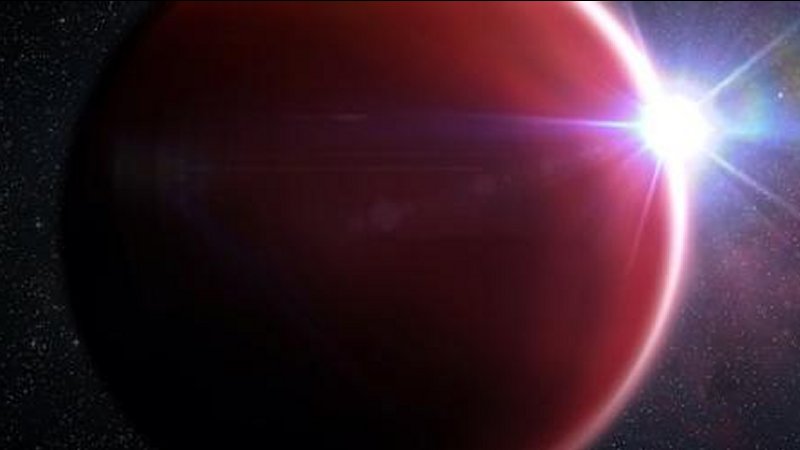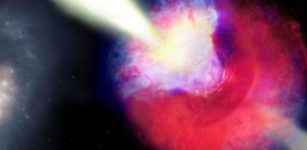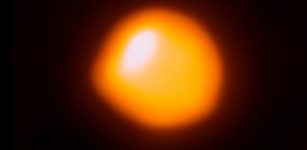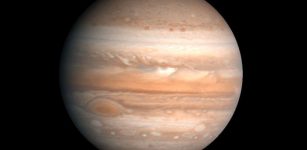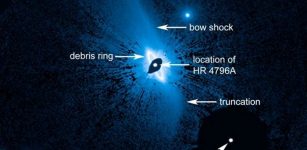Red Giant Betelgeuse Was Yellow Some 2,000 Years Ago
Eddie Gonzales Jr. – MessageToEagle.com – An interdisciplinary team centered around a Jena astrophysicist utilized observations from antiquity to prove that Betelgeuse—the bright red giant star in the upper left of the constellation Orion—was yellow-orange some 2,000 years ago.
The constellation Orion, Betelgeuse is marked with Alpha. Credit: Markus Mugrauer
As nuclear fusion in the center of a star progresses, brightness, size, and color also change. Astrophysicists can derive from such properties important information on the age and mass of a star. Those stars with significantly more mass than our sun are blue-white or red—the transition from red to yellow and orange is relatively rapid for astronomical time-scales.
Astrophysicists of Friedrich Schiller University Jena, Germany, together with colleagues of other subjects from the U.S. and Italy, have now successfully detected and dated such a color change in a bright star. With several historical sources, they found that Betelgeuse—the bright red giant star in the upper left of the constellation Orion—was yellow-orange some 2,000 years ago.
They report about their results in the current issue of Monthly Notices of the Royal Astronomical Society.
Sources from antiquity from around the world
The Chinese court astronomer Sima Qian wrote around 100 BC about star colors: white is like Sirius, red like Antares, yellow like Betelgeuse, blue like Bellatrix. “From these specifications, one can conclude that Betelgeuse at that time was in color between the blue-white Sirius and Bellatrix and the red Antares,” says Prof. Ralph Neuhäuser from the University of Jena, in a press release.
Independent from the above, the Roman scholar Hyginus described some 100 years later that Betelgeuse was in color like the yellow-orange Saturn—thus, one can quantify the former color of Betelgeuse with even more precision.
Additional authors from antiquity like Ptolemy bring further indications that Betelgeuse at their time did not belong to the group of bright red stars like Antares (in the constellation Scorpion) and Aldebaran (in Taurus, the Bull).
The Greek name Antares means “like Mars” in color; it was indeed reported as red and compared to Mars since millennia from cultures around the world. “From a statement by the Danish astronomer Tycho Brahe, one can conclude that, in the 16th century, Betelgeuse was more red than Aldebaran,” Neuhäuser notes. Today, Betelgeuse is comparable in brightness and color to Antares.
Still 1.5 million years to go until Betelgeuse explodes as supernova
Astronomer Ralph Neuhäuser from Jena has included historical celestial observations in his astrophysical research for the past ten years—this field is called “Terra-Astronomy.” He closely collaborates with colleagues from languages, history, and natural philosophy—including his wife Dagmar. “The view back in time delivers strong impulses and important results,” Neuhäuser adds. “There are quite a number of astrophysical problems which can hardly be solved without historical observations.”
What do those historical transmissions tell us about Betelgeuse? “The very fact that it changed in color within two millennia from yellow-orange to red tells us, together with theoretical calculations, that it has 14 times the mass of our sun—and the mass is the main parameter defining the evolution of stars,” Neuhäuser explains. “Betelgeuse is now 14 million years old and in its late evolutionary phases. In about 1.5 million years, it will finally explode as supernova.”
Written by Eddie Gonzales Jr. – MessageToEagle.com Staff


